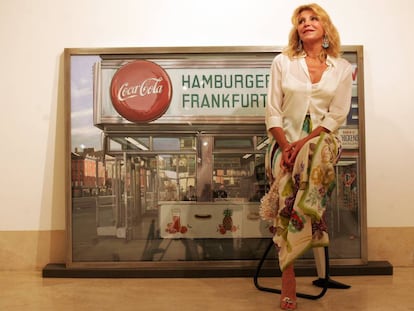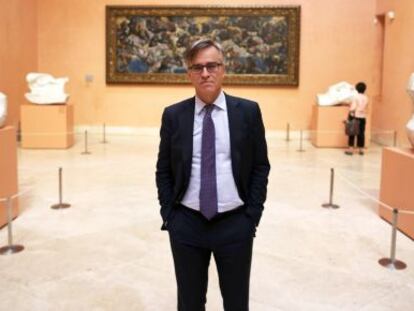All the colors of Venice at Madrid’s Thyssen Museum
World-renowned gallery explores Cinquecento revolution through works by Titian, Tintoretto and more
Around the year 1500, Venice was on the brink of political and economic isolation. The fall of Constantinople to the Turks and the changes made to European trade routes following the discovery of the Americas in 1492, among other events, had undermined the city-state’s great power.
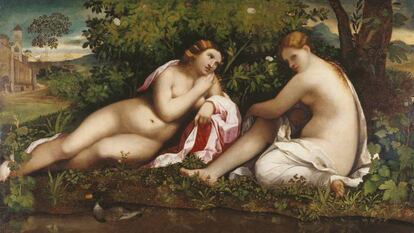
But as so often happens in history, the political woes stimulated artistic creation. Venetians began searching for what we would now call “a city brand,” and they decided to convince the world that theirs was the most beautiful in the world, and that their main waterway – the Grand Canal – was the most dazzling.
Drawing inspiration from classical culture, painters and architects, with support from art patrons, began introducing light, color and sensuality into depictions of beautiful models, both male and female.
The country scenes draw inspiration from literature. No matter how many grazing sheep or how much cultivated land you may see, there are no actual fields in Venice
Fernando Checa, curator
Madrid’s Thyssen-Bornemisza Museum is now launching a summer exhibition called Renaissance Venice. The Triumph of Beauty and the Destruction of Painting, featuring 89 works on loan from major international collections. Many of these works, which will be on display between June 20 and September 24, have never hung in a Spanish gallery before.
Fernando Checa, the curator, said that this show, together with the Prado’s own formidable Venetian collection, will make Madrid the world’s biggest showcase of Venetian painting over the summer months.
The show opens with a view of Venice painted by Jacopo de Barbari in 1500. The work marked the first time that the city was represented from a bird’s eye-view and in a realistic manner. The woodcut is accompanied by three portraits of Venetian magistrates, signed by Gentile Bellini, Tintoretto and Veronese, three of the biggest artists to emerge from this glorious period in Venetian art.
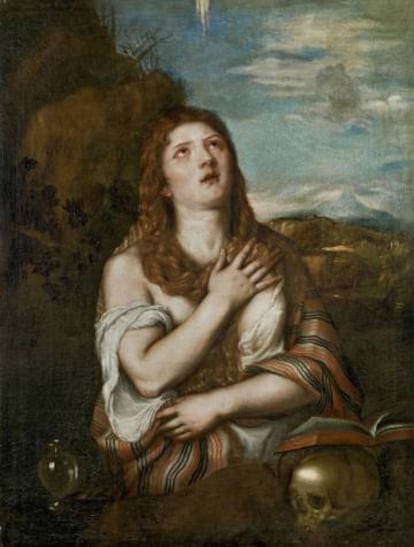
The curator explained that it took him four years to bring together all the works on display, and that nothing essential is missing from an exhibition that seeks to provide a comprehensive explanation of Venetian art in the 1500s.
Besides paintings, there are also sculptures and books on loan from the Pitti Palace in Florence, the Kunsthistorisches Museum in Vienna, the Louvre in Paris and the National Gallery in London, among others.
Also on display are around a dozen pieces that belong to the Thyssen collection, such as Tintoretto’s Paradise and Vittore Carpaccio’s Young Knight in a Landscape.
The ideal of beauty embodied by elegantly dressed, melancholy-looking young men as depicted by Veronese, Giorgione, Lorenzo Lotto or Giovanni Cariani give way to a gallery of beautiful women portrayed by Palma Vecchio, Giovanni Cariani, Sebastiano del Piombo and Titian – there are up to three different versions of his take on the theme of Penitent Magdalene.
“In their quest to sell beauty, the artists turned to the canons of the classical world,” said Checa. “They are ideal portraits that do not reflect any specific woman, although there could have been noblewomen and prostitutes who provided inspiration.”
This show, together with the Prado’s own formidable Venetian collection, will make Madrid the world’s biggest showcase of Venetian painting over the summer months
The exhibition underscores the role of power through the soldiers’ armor and the impressive indoor scenes. The portrait of Francesco Maria della Rovere, painted by Titian around 1536, is one of the most notable artworks in this section.
But the ideal of beauty reaches its climax with the nature and landscape paintings. “The country scenes draw inspiration from literature. No matter how many grazing sheep or how much cultivated land you may see, there are no actual fields in the city of Venice,” notes Checa.
He also warns that the famous views made by Canaletto and Guardi had nothing to do with reality, either. “They were made to be contemplated by people who did not live in Venice – what we would call tourists these days.”
Asked to select the jewel in the crown in the show, Checa said that “if I was forced to choose, I would pick The Rape of Europa by Paolo Veronese, a work filled with mythology and beauty, on loan from the Doge’s Palace, which it has rarely left.”
Rubens, Bacon, Rothko
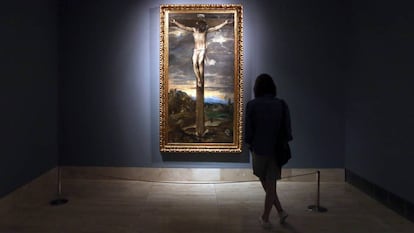
One of the chief traits of Venice's Cinquecento period is that color wins out over the brush strokes. The last room in the exhibition leads visitors to reflect on whether this technique ultimately carried within it the seed of its own self-destruction. Some works show how the violent chiaroscuro technique becomes so important in itself that even today, especially with Titian's work, there is debate on whether these works were actually completed or not, says Guillermo Solana, the artistic director at the Thyssen. But that stress on color had a major influence on all the later generations, including Rubens, Rembrandt, Velázquez, Goya and El Greco, who learned to paint in Venice. This influence also extends to abstract expressionists such as Rothko, Bacon and Freud.
English version by Susana Urra.
Tu suscripción se está usando en otro dispositivo
¿Quieres añadir otro usuario a tu suscripción?
Si continúas leyendo en este dispositivo, no se podrá leer en el otro.
FlechaTu suscripción se está usando en otro dispositivo y solo puedes acceder a EL PAÍS desde un dispositivo a la vez.
Si quieres compartir tu cuenta, cambia tu suscripción a la modalidad Premium, así podrás añadir otro usuario. Cada uno accederá con su propia cuenta de email, lo que os permitirá personalizar vuestra experiencia en EL PAÍS.
En el caso de no saber quién está usando tu cuenta, te recomendamos cambiar tu contraseña aquí.
Si decides continuar compartiendo tu cuenta, este mensaje se mostrará en tu dispositivo y en el de la otra persona que está usando tu cuenta de forma indefinida, afectando a tu experiencia de lectura. Puedes consultar aquí los términos y condiciones de la suscripción digital.
